It’s been quite a while since my last Fixed Deposits rates roundup in early Feb.
So I wanted to update that today.
3 things I wanted to discuss:
- Best fixed deposit rates in Singapore today (March 2024)
- Will interest rates go up or down?
- How to divide your cash between the various options available today – T-Bills, Fixed Deposit and Savings Accounts etc.
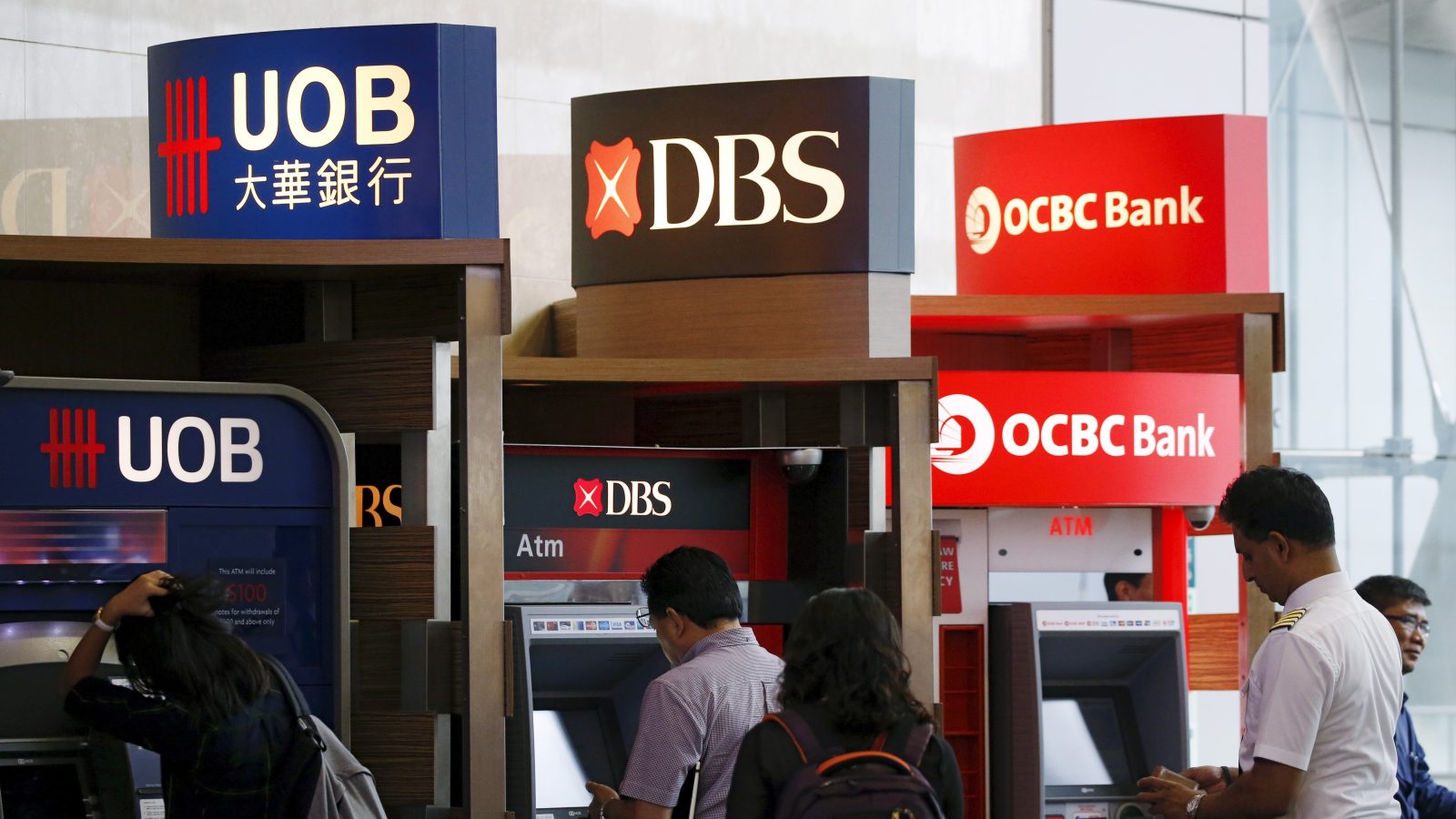
Best Fixed Deposit Rates yield 3.80% for 6 months?
First off – the latest list of Fixed Deposit rates are set out below.
To summarise quickly, the best fixed deposit option for:
- 3 months – 3.40% with Bank of China or Citibank (minimum deposit of $50,000 for Citibank)
- 6 months – 3.35% with CIMB
- 12 months – DBS/POSB Bank at 3.20%, minimum deposit of $1,000
The options above, are if you’re a retail investor depositing cash into the bank directly.
If you’re slightly more adventurous however – you can use Syfe Cash+ Guaranteed (who then deposits the cash into a fixed deposit).
This allows you access to institutional fixed deposit rates which are significantly higher.
If you do this, these are the rates on offer – 3.80% for both 3 and 6 months:
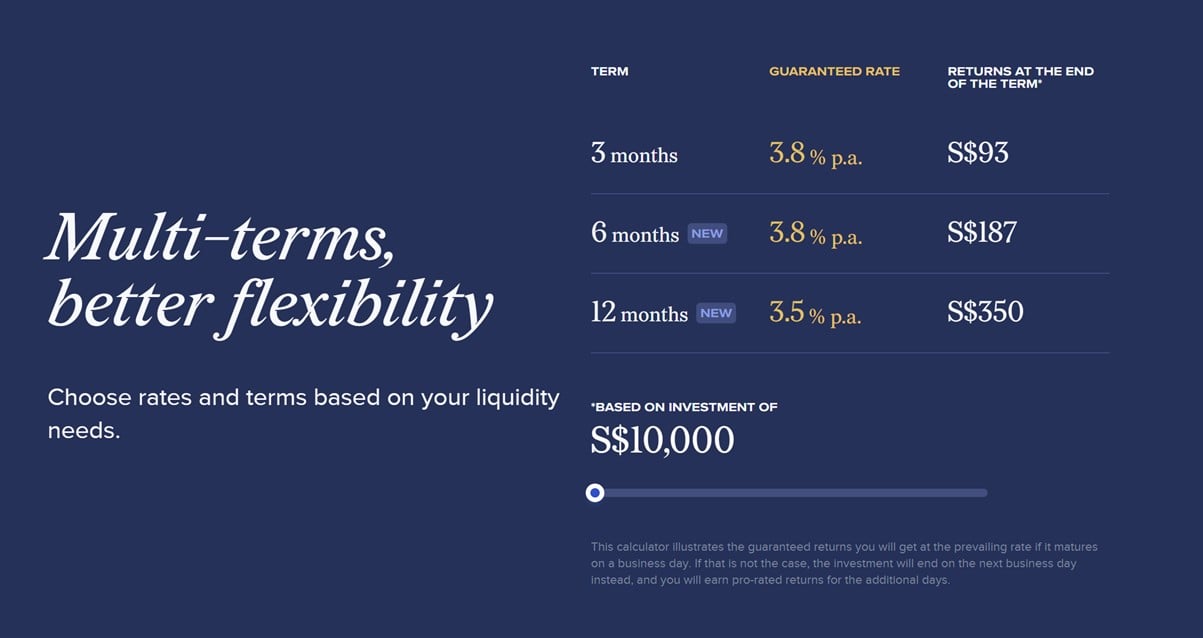
Comparing interest rates for T-Bills vs Fixed Deposits vs Syfe Cash+ Guaranteed
Compared the 3 options:
|
|
6 months |
12 months |
|
T-Bills yields |
3.78% |
3.44% |
|
Fixed Deposit (bank) |
3.40% |
3.20% |
|
Syfe Cash+ Guaranteed |
3.80% |
3.50% |
You can see how T-Bills and Syfe Cash+ Guaranteed are more attractive vs conventional fixed deposits.
Just to be clear – Syfe Cash+ Guaranteed is NOT SDIC insured
To be absolutely clear though, Syfe Cash+ Guaranteed is NOT SDIC insured.
This means that unlikely T-Bills (backed by Singapore government) or Fixed Deposit (SDIC insured up to the limits), Syfe Cash+ Guaranteed is NOT risk free.
This is made clear by Syfe on their website:
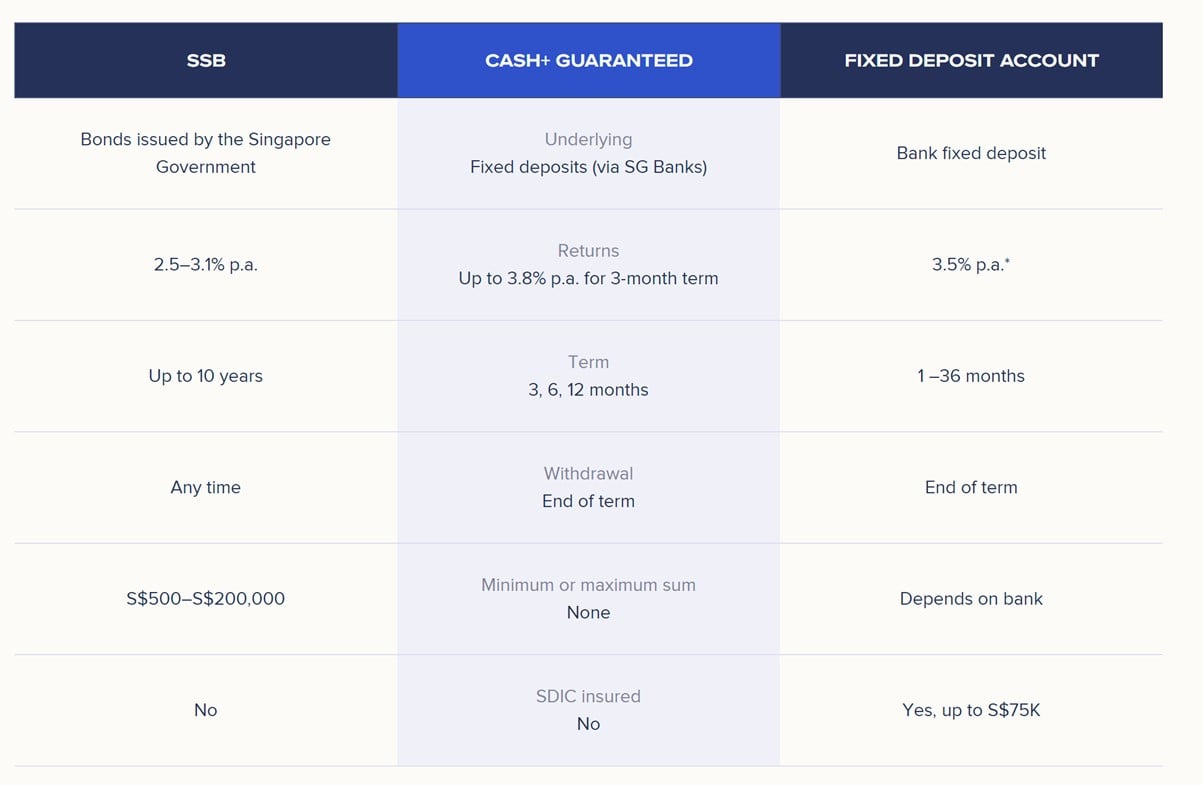
The cash is parked in fixed deposits with the underlying bank.
But if the bank goes under, Syfe as a whole would only be insured up to $75,000, which may not be sufficient to cover the losses.
Whereas if you park the cash with the bank directly yourself, you are SDIC insured up to $75,000 (to be increased to $100,000 on 1 April).
So I leave it to individual investors to decide if they are fine with this risk, or they prefer something absolutely risk free for peace of mind.
Best Fixed Deposit Rates yield 3.40% for 6 months
Latest list of Fixed Deposit rates are set out below (bold being the most attractive for each tenure).
After the table I’ll share my views on:
- Are interest rates going up or down?
- How to divide your cash between the various options available today – T-Bills, Fixed Deposit and Savings Accounts etc.
|
Bank |
Interest rate per annum |
Tenure |
Minimum amount |
|
3.40% (mobile placement) |
3 months |
S$500 |
|
|
|
3.30% (mobile placement) |
6 months |
S$500 |
|
|
3.20% (mobile placement) |
9 months |
S$500 |
|
|
3.10% (mobile placement) |
12 months |
S$500 |
|
3.40% |
3 months |
S$50,000 |
|
|
3.35% |
6 months |
S$10,000 |
|
|
|
3.30% |
3 months |
S$10,000 |
|
|
3.15% |
9 months |
S$10,000 |
|
|
3.05% |
12 months |
S$10,000 |
|
3.35% (mobile placement) |
3 months |
S$500 |
|
|
|
3.20% (mobile placement) |
6 months |
S$500 |
|
DBS/ |
3.20% |
12 months |
S$1,000 (max S$19,999) |
|
3.20% |
12 months |
S$50,000 |
|
|
3.15% (mobile placement) |
6 months |
S$20,000 |
|
|
|
3.00% (mobile placement) |
12 months |
S$20,000 |
|
3.05% |
3/4 months |
S$50,000 |
|
|
|
3.00% |
10 months |
S$50,000 |
|
3.00% |
6 months |
S$25,000 |
|
|
3.00% (deposit bundle promotion) |
12 months |
S$22,000 |
|
|
2.90% |
6 months |
S$10,000 (fresh funds) |
|
|
|
2.70% |
10 months |
S$10,000 (fresh funds) |
|
2.90% (online) |
6 months |
S$30,000 |
|
|
|
2.80% (online) |
12 months |
S$30,000 |
|
3.00% |
3/6 months |
S$30,000 |
Will interest rates go up or down?
Singapore interest rates are influenced to a great extent by US interest rates.
And US interest rates are influenced to a great extent by US inflation (high inflation requires higher rates).
So we need to start at the top – US inflation data.
Latest US inflation data this week is showing US inflation stabilizing around current levels (3-4% year on year).
Month on month inflation is no longer going down and starting to trend up.


But the market reaction to the hot US inflation print this week was very instructive.
And what was the market reaction?
Stocks, commodities, gold, bitcoin all went up.
If you recall – there was a time in this cycle where hot inflation prints were bad news for the market – as they meant higher interest rates from the Feds.
Well, that time is gone.
The market is calling Jerome Powell’s bluff at this point.
US inflation is going to stabilise at the 3-4%, and stop going down (unlikely to hit the Fed’s 2% target).
BUT – the Feds are going to cut interest rates anyway, because it’s an election year.
The market is pricing in 3 interest rate cuts in 2024:

The market is saying that inflation will stabilise at higher levels, and yet Jerome Powell is going to cut interest rates.
What happens next?
Let’s put it this way.
Inflation hasn’t been tamed for good, economic growth is resilient, and the Feds are going to cut interest rates. All while the US government is running a record budget deficit.
I don’t need a PhD in economics to figure out what happens next.
Now you can see why cyclicals, commodities, gold, bitcoin – all went up this week.
This actually makes me nervous about a potential repeat of the 1970s.
Every time the Feds ease, inflation comes back, requiring a second tightening cycle – that played out over a whole decade.
Based on what we’re seeing today, there is a decent chance this may happen.

If this is true.
Then yes interest rates will go down in 2024.
But I’m not so sure if they can go down as much in 2025 – 2026.
If inflation returns after Fed rate cuts this year, it could imply higher interest rates in 2025 / 2026.
And the Fed dot plot for 2025 – 2026 looks very optimistic.
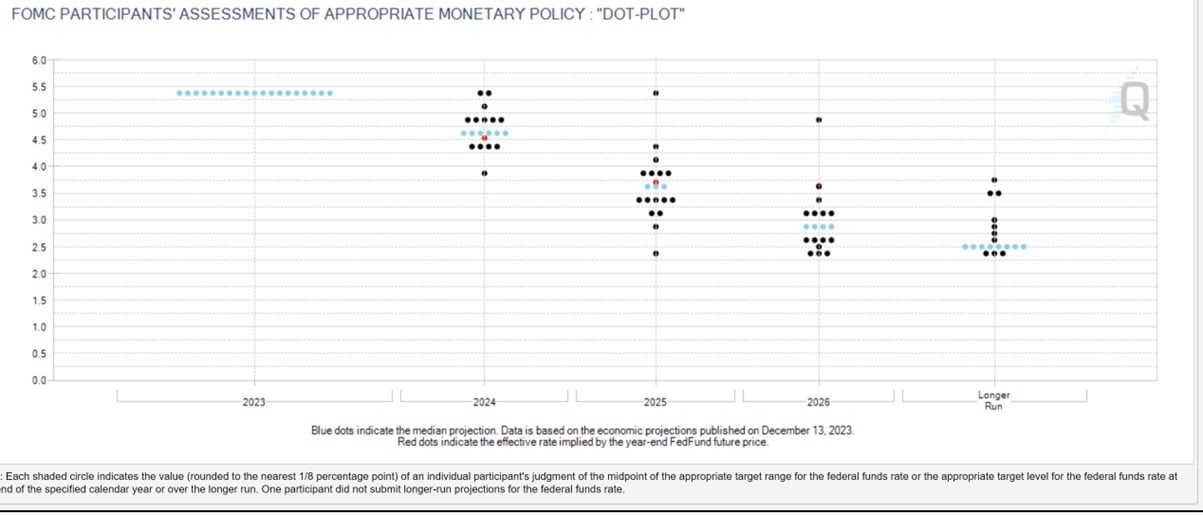
T-Bills, Fixed Deposit and Savings Accounts? How to split cash between these options?
At a high level, these are the options available to you today for a cash / low risk investment:
|
|
Yield (indicative) |
Liquidity |
Risk Free? |
|
High Yield Savings Account (Eg. UOB One) |
Good (4 – 5%) |
Good |
Yes if below SDIC limit ($75,000) |
|
Money Market Funds (Eg. MariInvest, Fullerton SGD Cash Fund) |
Good (3.8 – 4.0%) |
Good |
No |
|
T-Bills |
Average (3.78%) |
Low |
Yes |
|
Fixed Deposit |
Average (3.2 – 3.4%) |
Average |
Yes if below SDIC limit ($75,000) |
|
Singapore Savings Bonds |
Low (but can lock in for 10 years) (2.95%) |
Good |
Yes |
What to ask yourself – split cash between T-Bills, Fixed Deposit and Savings Accounts?
A lot of you have asked what to consider when deciding how much cash to split between each of the following options:
- T-Bills
- Fixed Deposits
- Money Market Funds
- High Yield Savings Accounts
The way I see it, it’s broadly a 2 step process:
- How much liquid cash do you need?
- Rest goes into highest yield options – based on your comfort level on risk
BTW – we share commentary on Singapore Investments every week, so do join our Telegram Channel (or Telegram Group), Facebook and Instagram to stay up to date!
I also share thoughts on Twitter regularly.
Don’t forget to sign up for our free weekly newsletter too – with weekly roundups every Sunday!
Key question to ask – how much liquid cash do you need?
I would say the key question to ask is how much liquid cash you need, to meet your spending needs the next 6 months.
Think about how much you need to spend.
Then think about how much cash you are expecting to come in over the next 6 months.
The difference is the amount of liquid cash you would need.
So if all of your spending needs are going to be met by your salary, or if a big bonus is coming in – then you can actually run very little liquid cash.
Whereas if you’re going to buy a house, a new car, or a big renovation, you’ll need to plan ahead and have that amount of cash set aside in liquid cash.
Some guidelines on liquidity – better safe than sorry
As a general note I would say don’t be stingy with liquidity.
It’s one of those where it’s better to be safe than sorry.
So after you run the analysis above – you’ll want to buffer for unexpected scenarios too.
For example a big medical bill that you need to pay upfront, then claim from insurance after.
A big car repair bill.
A decline in stocks that leads you to want to buy some stocks / REITs.
A loss of job, meaning no income in the short term.
Things like that.
As a general note I would say you always want to have enough liquid cash on hand to cover 6 months worth of expenses, as a worst case scenario.
Liquid Cash should go into options accessible on short notice – savings accounts, fixed deposits, money market funds
Once you have the number above.
That amount of liquid cash, should go into options that you can get back with ideally a day or two’s notice.
That will include:
- High yield savings accounts (eg. UOB One, OCBC 360) – as a savings account you can withdraw any time
- Fixed Deposits – can break anytime by telling the bank, although you will lose accrued interest
- Money Market Funds – they are T+1 liquidity
Number (1) tends to have the highest interest rates, with accounts like UOB One paying a 5.0% effective interest rate on $100,000.
So that should be the priority – and you shouldn’t move on to fixed deposits or money market funds until you’ve maxxed out this option.

Singapore Savings Bonds is an outlier, because technically the money only comes back at the start of the next month.
In a worst case scenario if you just missed the redemption window, you might need to wait a whole month to get the money back:

I would say some Singapore Savings Bonds is fine as you can get the money back reasonably quickly, but don’t overdo it and put 90% of your liquid cash into Singapore Savings Bonds.
Rest of the cash goes into highest yield options – based on your comfort level on risk
Once you have the above – the rest just goes into the highest yielding option.
As of today, that’s probably Money Market Funds like MariInvest or Fullerton SGD Cash Fund.
But Money Market Funds are technically not risk free, so I know not everyone is comfortable putting their entire nest egg into something that is not zero risk.
In which case you can consider T-Bills or fixed deposits.
But… how much cash to hold, vs stocks or REITs or real estate?
Do note that the discussion above only addresses where to put your cash.
It doesn’t address the question of how much cash to hold, vs stocks or REITs or real estate.
That’s a much harder question (that we try to answer on the rest of Financial Horse).
But long and short, I would say it depends on 2 factors:
- Individual risk appetite
- Market conditions
Individual Risk Appetite
Individual risk appetite is how much risk you can take.
If you’re a 62 year old approaching retirement, the amount of risk you can take is very different from a 25 year old starting his career.
Life goals matter too.
If you’ve saved up over a lifetime and finally have enough to afford a comfortable retirement, you may not want to put all that into high risk stocks and risk losing it all.
Whereas if your current capital is very low, you might not mind taking on higher risk for the chance to get great returns.
How much risk to take – only you can answer this question for yourself.
Market conditions
The other factor to consider is market conditions.
Yes I know this is market timing and all.
But I would say there are some times in markets like March 2020 or 2008/2009.
That as long as you have enough cash set aside for spending needs and contingencies, it probably makes sense to increase risk exposure given how cheap valuations are.
And vice versa.
But I know not everyone is comfortable with market timing, and some prefer to just dollar cost average regardless of market conditions.
In which case you can ignore this factor and focus on risk appetite above.
So there you have it!
Do you agree with my analysis above on how to split cash between T-Bills, Fixed Deposit and Savings Accounts?
This article was written on 15 March 2024 and will not be updated going forward.
For my latest up to date views on markets, my personal REIT and Stock Watchlist, and my personal portfolio positioning, do subscribe for FH Premium.
Buy Bitcoin, Ethereum, and crypto on Coinhako – 10% off trading fees
I use Coinhako to purchase Bitcoin, Ethereum and crypto.
Enjoy 10% off trading fees using:
Invitation Code: CwHdSgU
Or sign up link: https://www.coinhako.com/affiliations/sign_up/CwHdSgU
Check out my full review on how to buy Bitcoin / Ethereum.
WeBull Account – Get up to USD 2500 worth of shares
I did a review on WeBull and I really like this brokerage – Cheap US Stock, Options and ETF trading, in a very easy to use platform.
I use it for my own trades in fact.
They’re running a promo now.
You can get up to USD 2500 free shares.
You just need to:
- Sign up for a WeBull Account here
- Fund USD 500
- Execute 5 trades
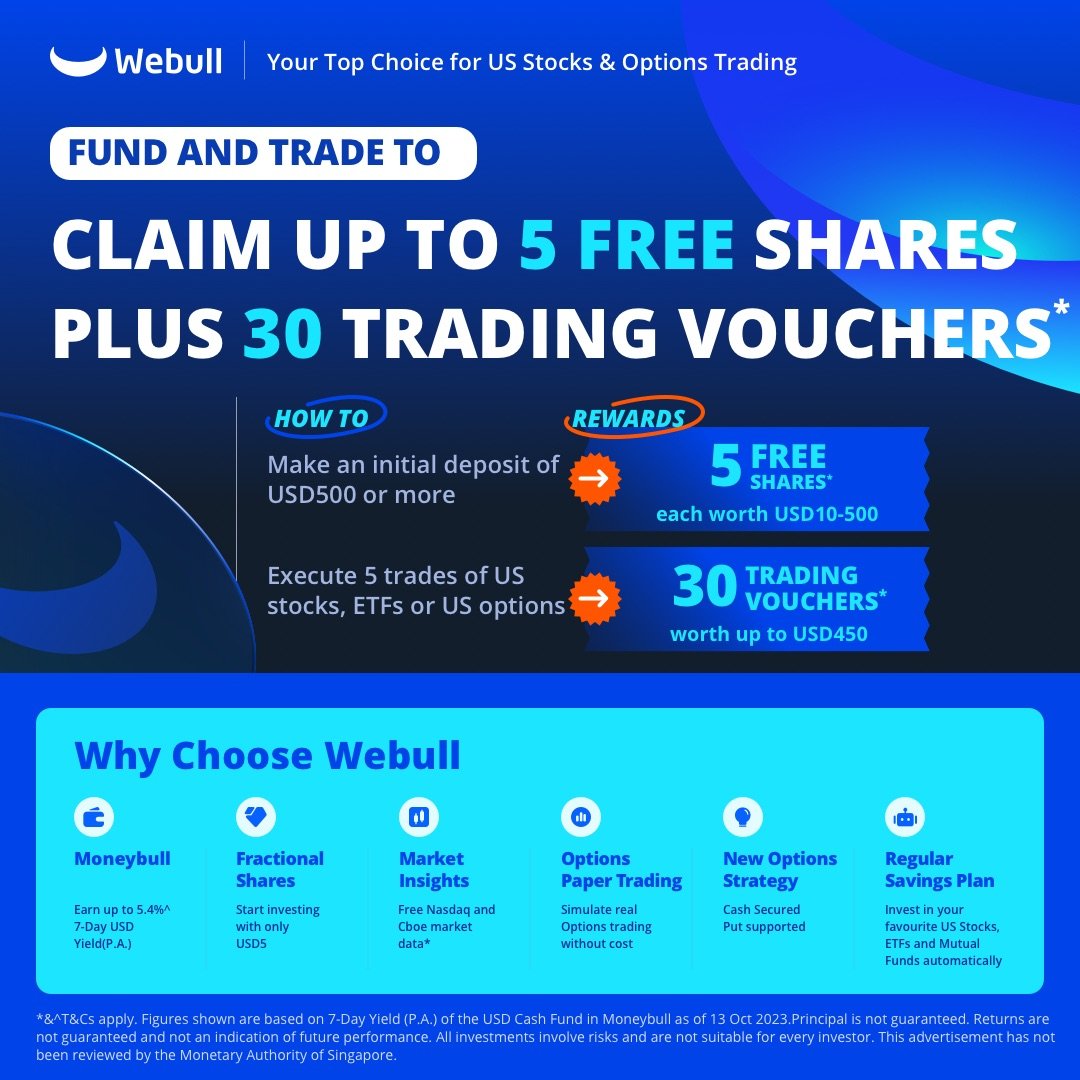
Trust Bank Account (Partnership between Standard Chartered and NTUC)
Sign up for a Trust Bank Account and get:
- $35 NTUC voucher
- 1.5% base interest on your first $75,000 (up to 2.5%)
- Whole bunch of freebies
Fully SDIC insured as well.
It’s worth it in my view, a lot of freebies for very little effort.
Full review here, or use Promo Code N0D61KGY when you sign up to get the vouchers!
Portfolio tracker to track your Singapore dividend stocks?
I use StocksCafe to track my portfolio and dividend stocks. Check out my full review on StocksCafe.
Low cost broker to buy US, China or Singapore stocks?
Get a free stock and commission free trading Webull.
Get a free stock and commission free trading with MooMoo.
Get a free stock and commission free trading with Tiger Brokers.
Special account opening bonus for Saxo Brokers too (drop email to [email protected] for full steps).
Or Interactive Brokers for competitive FX and commissions.